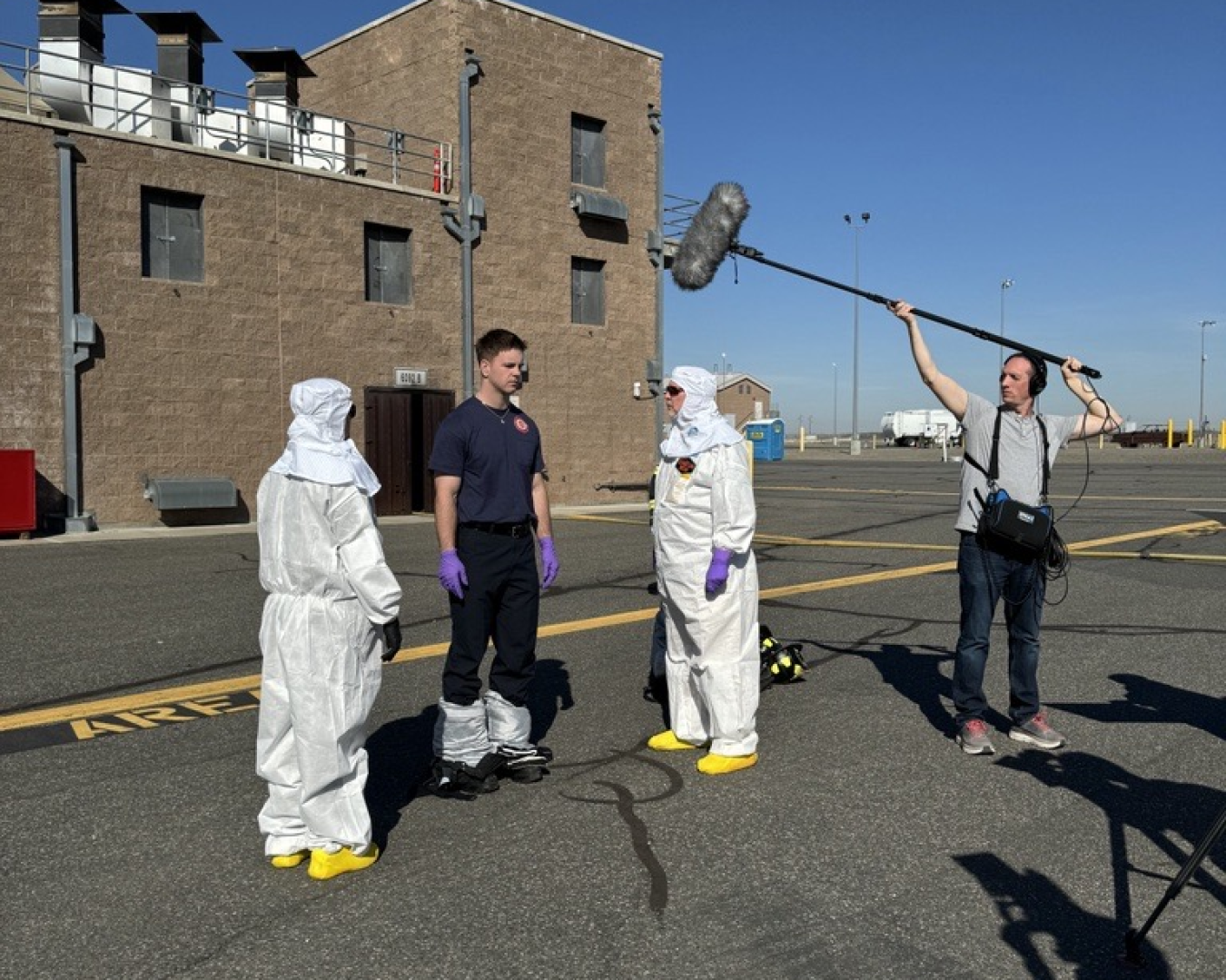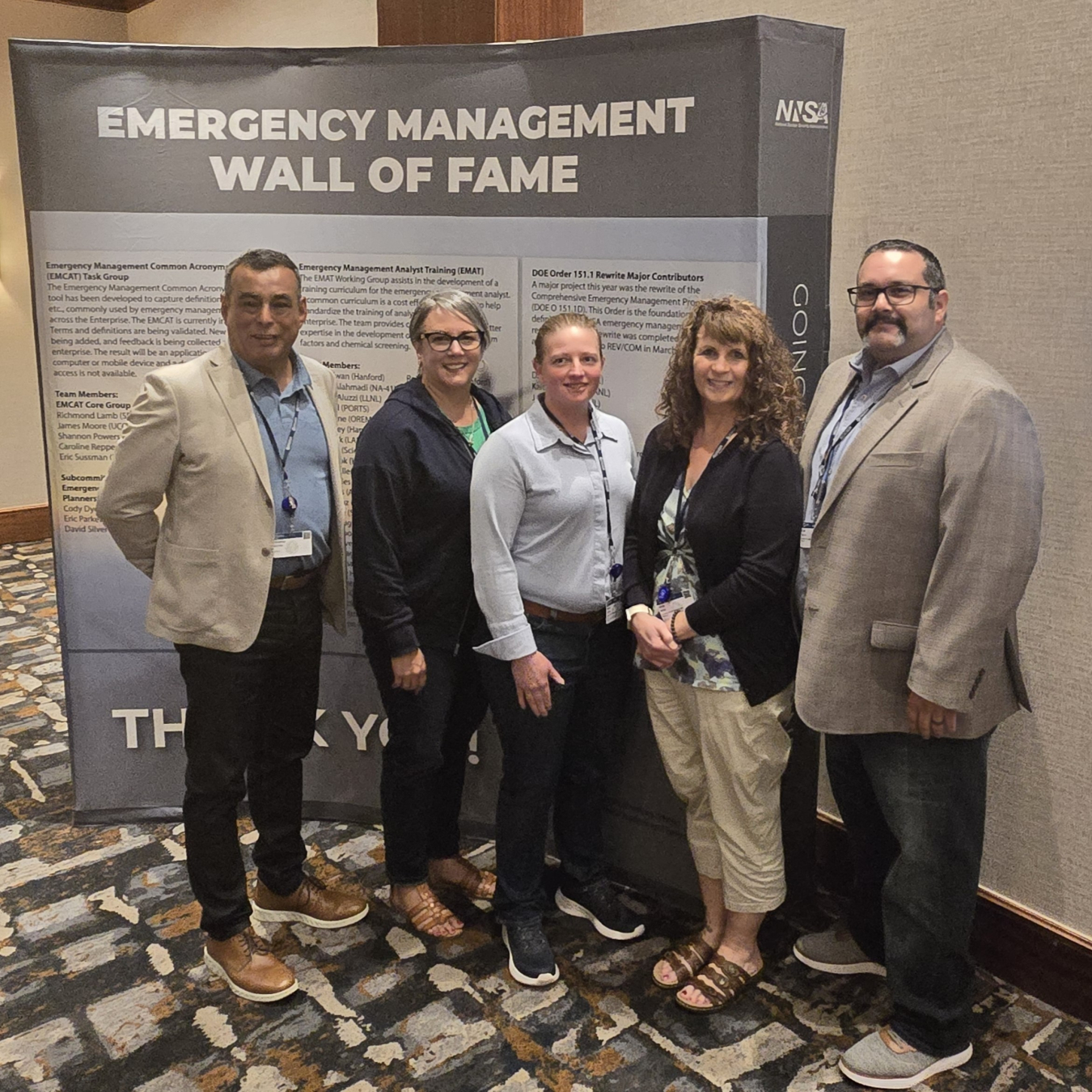The Emergency Management and Preparedness team with Hanford Site contractor Hanford Mission Integration Solutions (HMIS) gave a presentation at the 2024 Emergency Management Symposium.
Office of Environmental Management
June 20, 2024
The Hanford Site has implemented a new training video detailing best practices for safely doffing potentially contaminated firefighter gear, and it is now part of the site’s biennial training for radiological control technicians.
RICHLAND, Wash. — The Emergency Management and Preparedness team with Hanford Site contractor Hanford Mission Integration Solutions (HMIS) gave a presentation at the 2024 Emergency Management Symposium.
The annual event provides an opportunity for emergency management personnel to engage with their peers throughout the U.S. Department of Energy (DOE) complex, sharing ideas and information related to training, exercises and planning. During the presentation, HMIS highlighted firefighter safety at the Hanford Site and emphasized the importance of safely removing firefighting gear after entering potentially contaminated areas.

Ted Morales, Dulcie Allen, Renae Harvey, Gina Miller and Jose Garcia. Members of the Emergency Management and Preparedness team with Hanford Mission Integration Solutions attended the 2024 Emergency Management Symposium, giving a presentation highlighting the Hanford Site’s new doffing training and procedures.
Jose Garcia, an emergency preparedness specialist with HMIS, spoke about the challenges of training for radiological firefighter gear removal, known as doffing, in a multi-contractor environment like the Hanford Site. He explained that Hanford’s contractors each had their own doffing procedures, but the procedures had to be standardized so that any of the radiological control technicians available to respond to a drill or emergency event followed the same doffing process.
Representatives from the One Hanford team collaborated to develop a new emergency procedure, establishing sitewide training requirements for the contractor doffing teams. These requirements include standardized biennial classroom training and a new training video detailing a firefighter doffing scenario.
Garcia presented the video to the first responders subcommittee at the symposium, which includes firefighters and trainers from across the complex.
"Our contractor teams recognizing that an improvement opportunity existed in our emergency preparedness procedures was excellent,” shared Briana Lindberg, DOE’s Emergency Preparedness Program manager at Hanford. “This type of collaboration and continuous improvement ensures the continued safety of our people and the progress of our mission."
-Contributor: Jill Harvill
To receive the latest news and updates about the Office of Environmental Management, submit your e-mail address.

